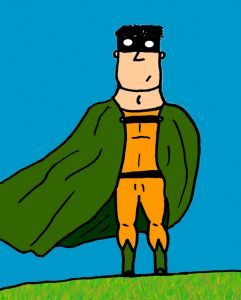Joseph Campbell claimed that heroes endure 17 stages in a journey, which in turn, constitutes a novel, trilogy, etc.
17 stages. 3 main headings: Depart, Initiate, Return.
How many of these are recognizable steps as you think about your favorite book, movie, TV show?
The stages being:
I: Departure –The call to adventure!
- Refuse the call
- Supernatural Aid
- Crossing the First Threshold
- Belly of the whale (willing to change)
II: Initiation–Road of trials
- Meeting the Goddess
- (Woman) as temptress
- Atonement with the Father
- Apotheosis
- Ultimate boon
III: Return –Refusal to Return
- Magic flight (adventure/danger, pursuit, obstruction/evasion)
- Rescue from without
- Crossing Return Threshold
- Master of two worlds: physical & spiritual
- Freedom to live: no fear, live in moment
If you analyze this 17-stage process like George Lucas did, you will definitely see the symmetry between his storytelling in Star Wars and the Departure, Initiation, and Return of young Luke Skywalker.
Similarly, you can note these changes in Tolkien’s Lord of the Rings trilogy as Frodo embarks on his quest to Mount Doom, and in The Matrix, as Neo realizes he is The One.
There are specific stages that heroes must endure, in order to accomplish the tasks set before them.
What is your favorite example of Campbell’s detailed process? Do you have a story that works so seamlessly within this system that you almost forget there’s a storyline behind it?
Maybe that’s the secret of the world’s greatest storytellers…seamlessness.
If a story can be told so flawlessly that we forget we’re being led through Middle Earth, battling the White Witch in Narnia, we’re related to Darth Vader, and/or no longer need to dodge bullets, then, we can fully believe that the 17 stages aren’t what’s most appealing about the journey, but the entire journey itself.
I re-read these stories (and re-watch their film adaptations), and I appreciate the genius behind their storylines each time. Essentially, the 2-D becomes 3-D to the reader/viewer in each rare example. There aren’t any glaring holes or glitches like we used to find in our beloved early video games (RIP Contra).
It’s storytelling of the highest order. I ask again if you have a favorite example that can be put through this 17-stage ringer and come out relatively unscathed, up to par?
No story is completely perfect, but many have the makings of it. Only a select few reach us at a level where we appreciate their creation…marvel at the brilliance of a world newly discovered.

